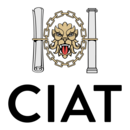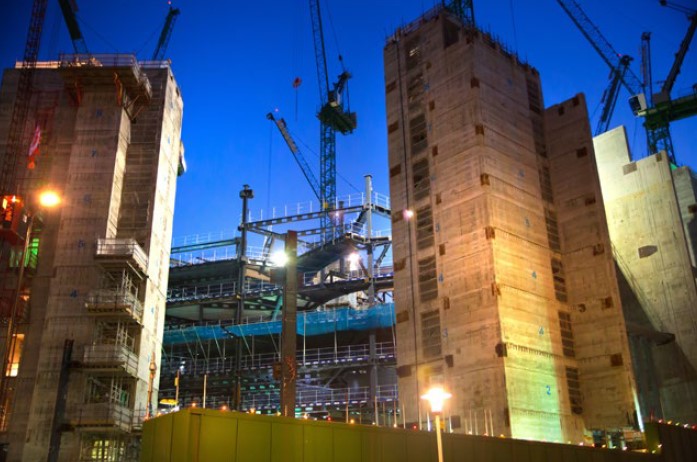How BIM can cause needless early stage MEP design concerns
Contents |
[edit] Introduction
Whilst there are a variety of different software applications on the market for delivering mechanical, electrical and public health (MEP) models, there are similarly a variety of different techniques that can be adopted and multiple reasons for using each of these techniques, which ultimately result in the same outcome. What is more crucial, is that the delivery team is organised in a manner, whereby all members are aware of the project requirements and how best to deliver them.
Building Information Modelling (BIM) enables the whole design team to collaborate on one single source of truth. The ISO 19650 standard represents the latest international industry best practice for managing information over the whole life cycle of a built asset using BIM. It contains all the principles and high-level requirements for BIM Level 2, which is mandated by the UK Government for construction projects over £50m.
ISO 19650 not only outlines the typical team structure but also the documented processes that must be put into place to ensure the delivery team remain informed of changes and what information must be delivered, when, in what format and by whom. This helps to ensure that the team delivers projects as one collaborative effort, using current information to avoid abortive time.
Two key documents that ensure this happens are the Exchange Information Requirements (EIR) and the BIM Execution Plan (BEP). The EIR is a scope of services provided by the client and the BEP forms a technical response to these client requirements, providing instructions to the delivery team as to how the project must be fulfilled.
[edit] New challenges
Whilst architectural practices have been utilising BIM for quite some time, the concept has more recently been introduced to the MEP sector. This means that consultancies and contractors find themselves chasing the curve to adapt to a relatively new method of working. Therefore, it should come as no surprise that the majority of BIM information managers are usually from an architectural background due to their longer-term experience in model and data management.
This means that often the information manager’s instinct is to be concerned about the number of clashes that are identified during federation. However, the design will be subject to changes a number of times before it becomes finalised, and whilst services co-ordination can be quite tricky and involved, it is pointless to carry out detailed co-ordination until the time at which the layouts become frozen and the design fixed. It is therefore important that the information manager understands how MEP modelling progresses and why these issues may occur.
[edit] RIBA stages
As all delivery team models follow the RIBA stages, it is important to document the modelling responsibility and “level of information NEED” required at each stage so that all team members have a crystal clear understanding of what information is required from them. A model responsibility matrix does exactly this, breaking down the tasks and assigning them to a responsible party. The RIBA Plan of work handles this well for architectural elements, but it is not definitive enough for the MEP elements, so the MEP industry supplements this with BSRIA BG6 to break down the MEP into specific tasks.
The sole purpose of the MEP Concept model produced at RIBA Stage 2 – ‘Concept Design’ is to confirm plant space requirements and riser space allocation, and to determine adequate space for the primary distribution routes of the MEP services. Whilst modelling at this stage appears relatively simple and uses placeholders to allocate space, an enormous amount of engineering work goes on behind the scenes to ensure that adequate space has been allocated so the design team does not run into complications at later stages. Failing to carry out detailed engineering checks at this stage can have significant implications for the future success of the project. Also, at this stage, structural elements are considered but may be encapsulated in the distribution routes.
At RIBA Stage 3 – ‘Developed Design’, the initial design intentions are laid out along the primary distribution routes established at Stage 2. This is to validate and confirm that proposed routes are acceptable, with sufficient space to provide an achievable solution capable of being installed within the building. Physical elements replace placeholder information and primary structural elements must be taken into consideration. Ultimately, there should be no issues with spatial requirements at this stage, and these secondary checks use physical elements to provide confirmation. Any issues that may have been overlooked at Stage 2 are captured whilst there is still time to develop a workable solution.
At the completion of this stage, all primary routes will be fully co-ordinated and pinch points along the way identified where any element of risk exists. Where services installation is not achievable, workshops should be held to find a solution, which may involve changes to the architectural and structural elements.
[edit] Clash concerns
Early Stage 4 is usually where information managers become increasingly concerned as the design develops into the technical design stage and a significant number of clashes exist within the model. Although the developed design has been completed, there are often ongoing changes within the architectural and structural models. This is often due to design development, which may seem insignificant but has major implications for the MEP delivery team.
Typical contributing factors to these clashes include the re-allocation of rooms, changes to ceiling heights, increased depth of structural elements and client variations. These changes may not only have implications in the immediate area but all the way back to the primary plant equipment.
The final co-ordination of MEP services is quite involved and takes considerable time, as it is vital to not only ensure that adequate space is available but also that installation is achievable. This is achieved by using best practices and realistic tolerances and ensuring that provision has been made for access, maintenance and plant replacement.
The initial focus must be to ensure that the fundamental design is finalised so that it provides the desired conditions for the building. It is not uncommon to then produce a tender package of information in 2D to allow the lead appointed party to go out to market for pricing.
Once the design is fixed, the co-ordination can commence. As this can be a time-consuming exercise, it makes sense to carry out this work only once to avoid abortive work.
The MEP modelling may simply be carried out at a set of pre-determined heights in order to produce the required information. In this circumstance, the primary focus is on the design and not project co-ordination. Once this package of information has been submitted, the co-ordination takes precedence and clash detection is carried out to resolve any co-ordination issues. As a result, the model may contain many clashes until the design is finalised.
In summary, the MEP services design is subject to considerable change due to factors that are outside of the designer’s control. It is therefore important to ensure that the MEP design is fundamentally correct before commencing with co-ordination work, as small changes can have a big impact and result in a large amount of abortive time. During the design stage, MEP models will inevitably contain clashes. However, provided that adequate space and distribution routes for the services have been established at the concept design stage, co-ordination should not be too much of a concern until the fundamental design is finalised. It is therefore important to be selective about which issues require the design team’s immediate attention.
This article originally appeared in the Architectural Technology Journal (at) issue 137 published by CIAT in spring 2021. It was written by Paul Hargreaves, Group BIM Manager, TÜV SÜD.
--CIAT
[edit] Related articles on Designing Buildings Wiki
BIM Directory
[edit] Building Information Modelling (BIM)
[edit] Information Requirements
Employer's Information Requirements (EIR)
Organisational Information Requirements (OIR)
Asset Information Requirements (AIR)
[edit] Information Models
Project Information Model (PIM)
[edit] Collaborative Practices
Industry Foundation Classes (IFC)








